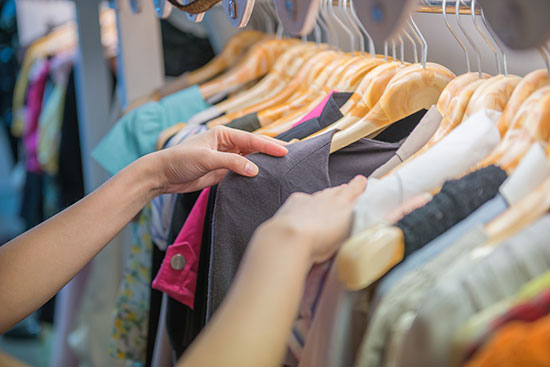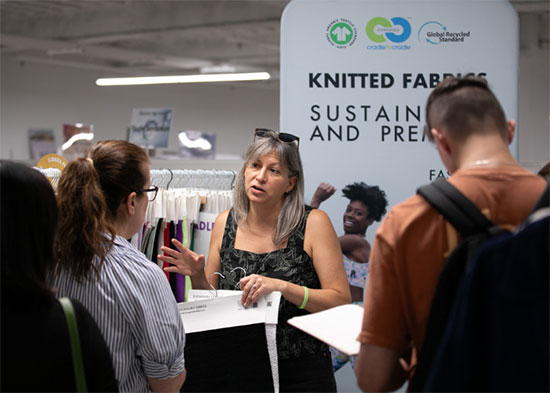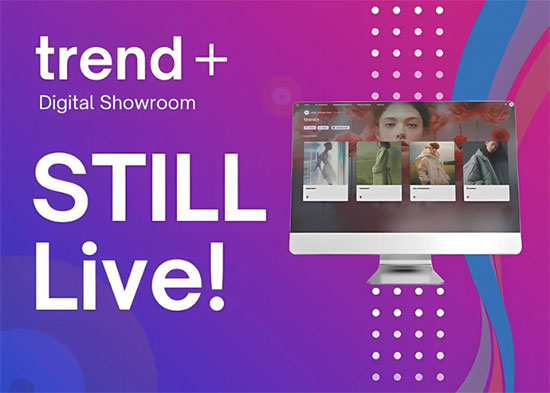September 16, 2024

Thanks to the pandemic, the typical 9 to 5 work day is a thing of the past. The massive disruption caused people to think about their jobs differently, transforming perspectives about how, where and when we show up at work. Some companies have responded with greater flexibility while others have incorporated mindfulness and self-care activities. Employees have also taken it upon themselves to adopt “mood boosting” environments at home and allot time for walks and meditation, according to Nia Silva, director of materials at Fashion Snoops.
“Unplugging and taking time for oneself throughout the day, and having that be as essential to schedules as meetings and deadlines is proving to be an incredibly profound switch in work culture that has the potential to work its way into traditional corporate environments as employers need to find ways to stay competitive,” she said.
Comfort reigns
With this shift to what it means to be at work has come different demands on consumers’ on-the-clock attire. Even for employees who are in the office more days than not, the expectations for how they should dress may have also shifted, changing what they’re looking for in business attire. The result is a new shopping agenda shaped by the experiences of the last few years.
Confined to home, many people embraced comfort in the form of stretchy, soft materials during the pandemic, with some even proclaiming they’d never go back to “hard pants.” Even now with shoppers back out in the world, they see no reason to sacrifice comfort for style—and fashion has responded accordingly.
“Athleisurewear really took off during the pandemic and now, we are seeing blurrier lines between office apparel and comfortable apparel,” Hayato Nishi, business development manager at Lenzing Group. “Consumers are shifting towards more casual wear; pieces that still look business casual but have more emphasis on comfort and mobility for the wearer.”
Marlene Srdic speaks for many shoppers with her attitude toward her work attire today. “Post-pandemic, I'm no longer willing to sacrifice comfort,” she said. “I am looking for high-quality fabrics, easy fits, dresses, skirts and elastic waists.” Srdic added jeans are out but she doesn’t want to live in sweats either. Even though she works from home, she said she wants to feel “put-together” in pieces that are “comfortable and luxurious.”
Versatility is key
As more companies embrace relaxed silhouettes and even nice sneakers, there’s less delineation between what shoppers are looking for in office wear and the other aspects of their lives, according to Jennifer Lukowiak, director, supply chain marketing for Cotton Incorporated. “Work/life balance is a top priority, and the ability to effortlessly transition from the office to personal time is central to how we live today—and our clothing choices reflect this shift,” she said.
Blair Casper Winston works in the office one to two days a week, and that schedule has helped shape her attitudes toward her clothing purchases. She looks for tailoring and linings as hallmarks of quality, and she’s willing to spend more on pieces that are multipurpose. “Whether it's now being hybrid for work or a factor of my age (mid 30s), I don't think about a specific work wardrobe anymore. I'm looking to fill my closet with well-made pieces that are suitable for a range of life events,” Casper Winton said.
Fashion Snoops’ Silva said this type of multifunctionality is one of two major shifts emerging from consumers’ new varied working styles. The other she calls “twisted tradition,” a trend among younger demographics. “Think playful skewing of prints, 90s tailoring, and mundane details that combine to refresh corporate classics into new novelties. It's almost as if office attire is becoming so unfamiliar to younger workforces that it feels somewhat fashion-forward now.”
Fabrication matters
To get the look and feel they want, consumers are also paying close attention to fabric content. They want ease in terms of both wear and care. “Consumers are seeking clothing that is easy to wear and care for, with a strong preference for items that don’t require special treatments or cleaning protocols,” Lukowiak said, adding they’re also more likely to pay a premium for natural fibers and performance features.
Megan McKeen, who’s in the office three days a week, says comfort is important both inside and outside of the house but she also looks for classic styles and pieces that she can wear for work and play—plus she wants longevity. “If I can wear/wash them MANY times without needing to replace them or see pilling [that indicates quality],” she said.
If Theresa S. is going to splash out on work clothing, it has to tick a few boxes. “I will spend more on basics that are natural fibers that are versatile enough to work with a lot of other items in my closet (i.e., linen trousers for summer in a pale tan color),” she said. Most of her wardrobe will take her from the office to her home office with a few pants and blazers sprinkled in to kick her look up to business casual for client meetings. Across the board, she opts for pieces that are machine washable.
Fabric content is also important for Meg B., who goes into what she characterizes as a “sharp casual” workplace a few days a week and sometimes attends conferences. Her wish list for work clothes includes items that are “well constructed, [have the] ability to launder at home and ability to utilize in multiple seasons.” Multi-season fabrics and linings are the types of things she’ll spend more on.
While lifestyles may have become more casual overall, looking good is still important to shoppers—and they’ll seek out the pieces that allow them to have the best of both worlds.
“I like to feel good in my clothes, because I find anything that’s uncomfortable makes me look less confident,” said Kirsten Olds Russo, a full-time, in-office employee. “That said, I will wear a heel, pointed toe shoe, fitted pants or fitted dress, etc,, to achieve the look I want. But I don’t want to be in pain or wear anything that’s ill fitting or restrictive.”

Texworld & Apparel Sourcing Los Angeles Was a Success!
The second edition of Texworld Los Angeles, Apparel Sourcing Los Angeles and Printsource took place August 13-14 at the California Market Center. The show continues to prove to be a valuable resource for West Coast buyers and industry leaders, this time touting exhibitors from 15 countries from around the world.
Texworld presented its Next-Gen Innovation Hub for the first time on the West Coast. The spotlighted section featured textiles with advanced sustainability and functionality attributes. Additionally, through the Texpertise Econogy initiative, the show made finding exhibitors with third-party verified sustainable materials easy to identify.
The show also acted as a beacon for Fall/Winter 2025/26 trends. The trend showcase curated by NYC-based agency Doneger | TOBE offered a look at the creative direction for the coming season. And Material Exchange debuted Frank the Bear, an AI assistant designed to make sourcing easy both on the show floor and on the go.
Finally, the Texworld seminar series composed of Textile Talks and the Lenzing Seminar Series delivered informative discussions on a range of topics, including understanding emerging ESG policies, capitalizing on nearshoring opportunities and aligning with SDGs.
We look forward to seeing you at the next Los Angeles show in July 2025. Until then, mark your calendars for Texworld NYC and Apparel Sourcing NYC, taking place January 21 - 23 at the Javits Center.

Trend+ Bridges Online/Offline Sourcing
Texworld debuted Trend+ at the Los Angeles show, an interactive experience that allows buyers to research product details and order samples right from the show floor. By scanning a barcode on the textiles of interest, they’re offered product details, the booth number for the associated exhibitor and the option of receiving samples via express delivery. Further, they had the option to ask Frank, the AI assistant, to help them explore the materials catalog. Buyers from Abercrombie & Fitch, Perry Ellis, Adidas, Walmart, Ralph Lauren, DKNY, Kate Spade and more tapped into this valuable tool, resulting in thousands of page views for exhibitors’ virtual showrooms. The exhibitors in turn were alerted to the buyers’ interest, allowing them to follow up and answer any additional questions. If you missed Trend+ at the show, this resource is still available. Click here to get started.

What We’re Reading
Next-gen material startups are deprioritising fashion
Diversification beyond fashion may be just the thing to scale fledgling next-gen materials. Vogue Business reports that the companies behind these lower impact textiles are turning to the auto, furniture and hospitality industries to secure orders in the volume needed to bring their materials to market. Read the article to learn why that’s a double edged sword for apparel, which historically has struggled with commercialization.
Inside Fashion’s Race for Circular Polyester
Driven in part by the ticking clock of global warming and in part by the shortfall in feedstock for bottle-to-textile recycling, Sourcing Journal reports the industry is recognizing the need to step up textile-to-textile recycling. While a growing number of companies are touting innovations in recycled polyester, few have progressed beyond the pilot stage. Read the article to learn about the various methods behind recycling polyester textiles and what they translate into in cost per garment.
California apparel EPR bill moves forward
California’s Responsible Textile Recovery Act is headed to the state Assembly, which if signed off on by the governor would mandate extended producer responsibility. According to Waste Today, the bill focuses on reuse, includes language specific to secondhand retail, and zeros in on overproduction by shifting costs associated with waste management to fashion firms. Read the article to learn more about the bill’s intended impact.